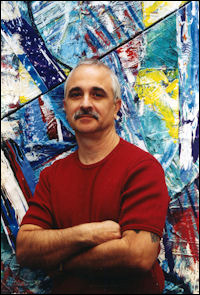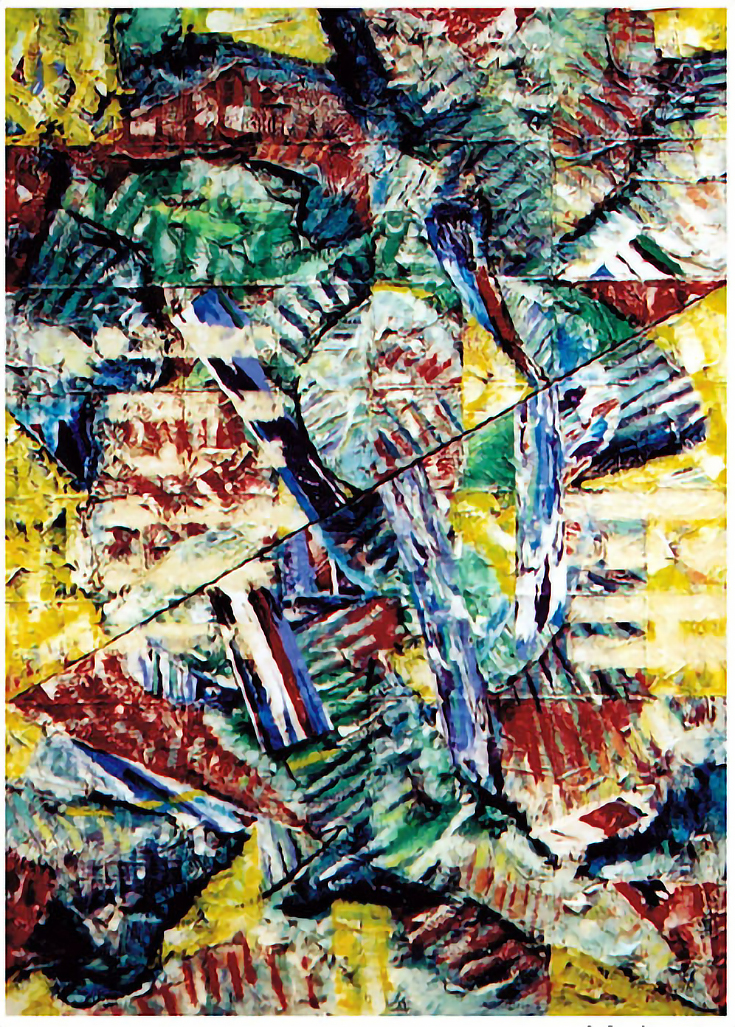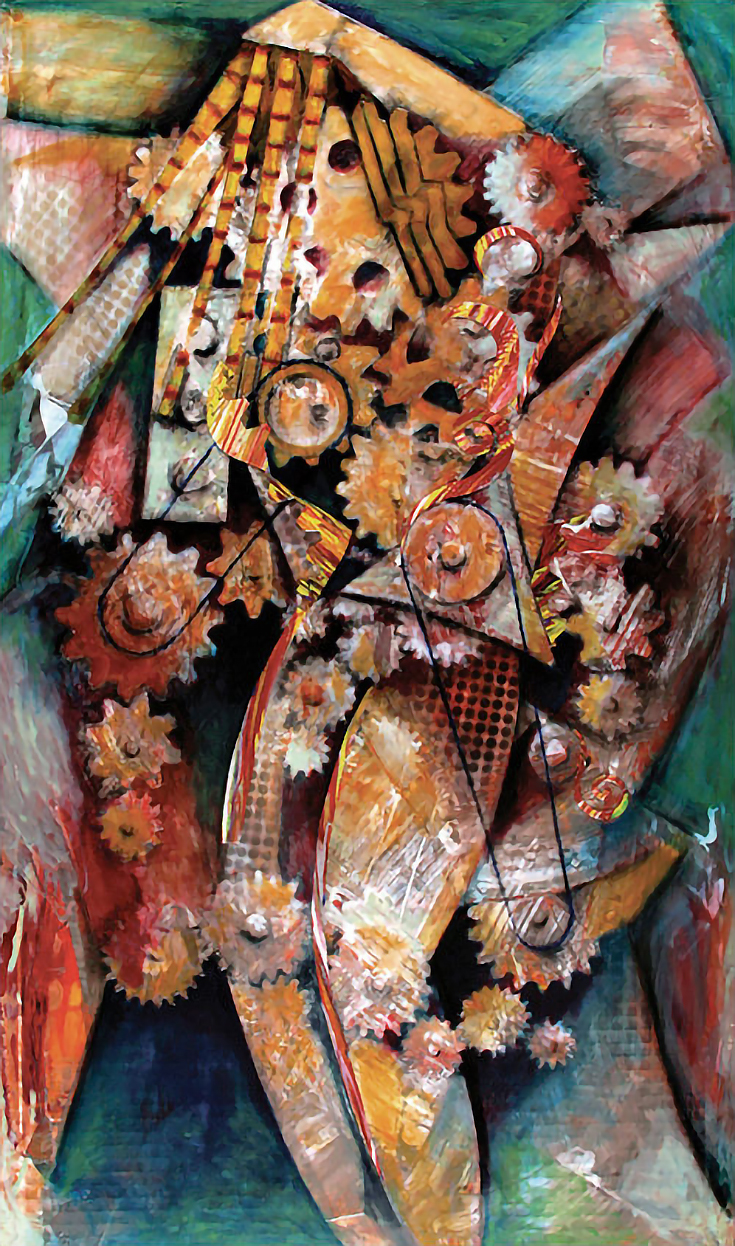
In 1977, Al graduated with a BFA from the Massachusetts College of Art, then in 1990 he attended Florida Atlantic University to complete his teacher certification. In 1991, he won the South Florida Art Consortium Fellowship for Artistic Excellence in the Arts, which included a $15,000 honorarium.
Today he balances his time between creating art and teaching others.
Alyice: Why did you choose acrylic as your medium?
Al: Acrylics are only one of many mediums I use. I started with oils, then moved to acrylics. Most people think of me as that acrylic-paint-skin guy, but I am a mixed-media artist. I use all mediums such as oil, acrylic, latex, enamel, and alike.
Alyice: What is the most challenging part about working with acrylics?
Al: Since acrylics dry fast, you have to be prepared and knowledgeable to move with the paint. If you are not versed well in the processes of painting, then acrylics will dry before you make a decision of where to put the next brushstroke. I advise most beginners to start with oils and learn basic skills.
Alyice: What is the best part about working with acrylics?
Al: The best thing about acrylic is that they are fast drying, and flexible.
I also like to add dried paint “skin” to my mixed media works. I originally made large paint skin collages and wrote extensively about the process on the web and in my book, The Artwork of Al Razza, available on Amazon.com.
Here is my three-part web series on the process: Part 1, Part 2, Part 3.
Alyice: On your site, you state that you want your work to be provocative and stimulating. Can you tell us how you go about achieving this goal?
Al: Hard work and passion go a long way in making my work provocative and stimulating. I don’t know if I can be specific, but I think the layers of my work speak for themselves.
My work is also very tactile. This tactility evokes a “need to touch” component from the viewer. I feel the more our senses can be incorporated in the work, such as touch, the better chances a bond will occur with the viewer.
Alyice: You draw a lot of your inspiration from mythology and the old world. Can you share your process for creating a piece based on such inspiration?
Al: I like mythic stories, as well as the inventive and creative spirit of the Renaissance.
Sometimes I revamp old themes, giving them a modern twist. You can see this in my pieces titled Ironica and Venus Millenarian, where Venus is seen less as a beautiful woman and more as a modern machine. It is a testament to our mechanized and plastic world.
Alyice: How has your style changed over the years?
Al: I started painting, as most students of art do, with academic things such as still lifes, landscapes, and figures. I still like to paint them, but I do it mostly as part of my teaching of new students.
Today, I am more adventurous and I look to unconventional mediums and subjects for inspiration. I take a lot of risks and often fail to find great solutions with some of these materials. But the journey is the key to keeping true to my heart, which is constantly looking for new challenges.
I am satisfied that my work has proven itself and has been accepted by an ever increasing audience, but I continue to seek new ways to improve what I do.
Alyice: How do you come up with a profitable pricing structure for your acrylic pieces?
Al: My retail prices are fixed by the galleries that represent me, but I have a net price, which is based on fair market value for works of similar size and quality. This excludes all scholarly or auction contributions that may influence the highest prices paid for art in our industry.
Alyice: Aside from creating works of art, you also teach art. How did you get started as a teacher of the arts?
Al: I have always shared what I know, so becoming a teacher seemed natural.
My students are my best asset. They help me stay true to myself, and I help them achieve their goals. With this formula we both move forward.
Many years ago I worked for the Florida School System as well as private institutions, but I wanted to be my own administrator so I started my own school with my own philosophy. I require strong foundation skills, knowledge of art history, and encourage imaginative problem solving skills.
My school has grown because I work hard for my students and they appreciate it. Many of my students have gone on the win scholarships and awards because of the education I was able to provide, and I am proud of that and them.
You can visit Al Razza at his website, www.razzadesign.com.
This post may contain affiliate links.



